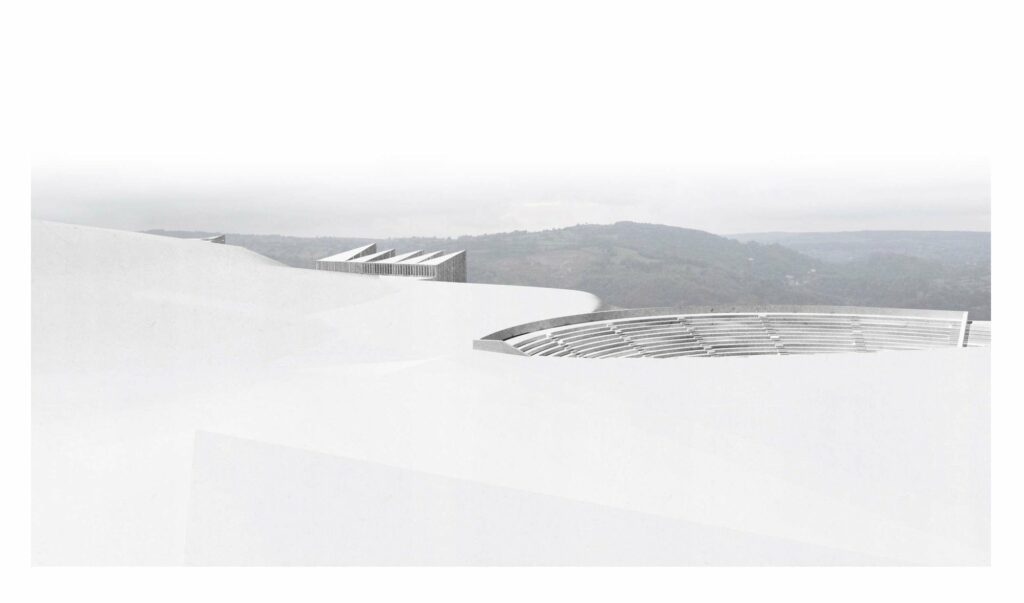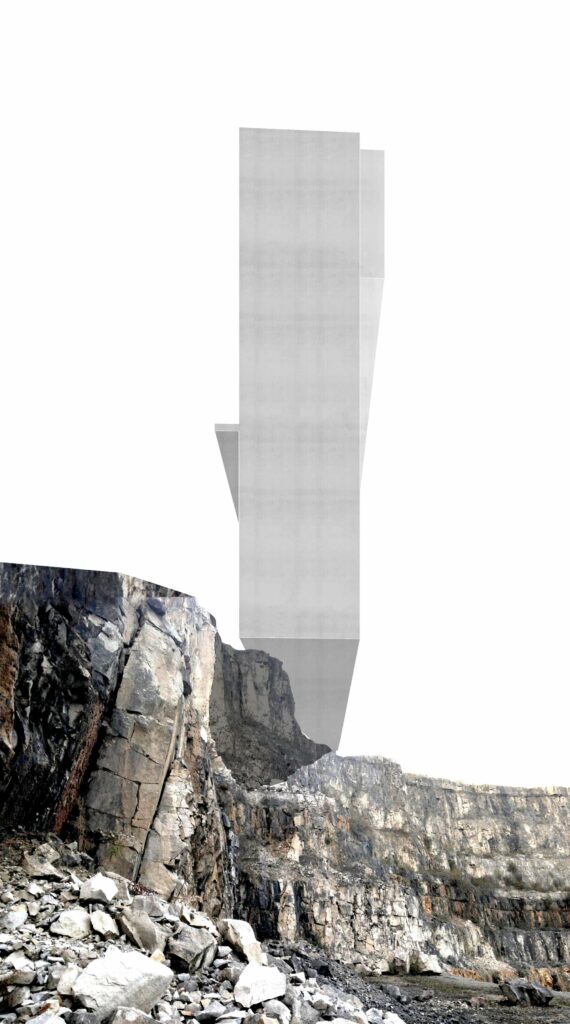High Ground
– Colette Sheddick and Pierre d'Avoine
School of Architecture and Landscape, Kingston University
We have researched the Derwent Valley World Heritage Site (DVWHS) over the last three years. This year we investigated the impact of infrastructure on community and landscape. Transport networks and sites of extraction have scarred the English landscape over millennia. The pragmatics of constructing such infrastructure reveal different building types and land use, sometimes in surreal juxtaposition.

We have focussed on the HIGH GROUND or Buffer Zone, defined by a line which runs along the upper edges of the valley, which bounds the DVWHS, and its hinterland. There are moments when the boundary line appears arbitrary and the reasons for its exact location unclear. We have explored this ambiguity and made proposals for the landscape which straddles this edge.

We carried out preliminary exercises including ethnographic studies (interview and artefact), made carved and cast models of scarred ground and conceptual drawings of landscape. Unit 4 travelled to Évora to experience and survey Álvaro Siza’s Malagueira quarter, in particular the relationship between housing and infrastructure designed by Siza to provide an urban ordering to the new development.
We also visited Hadspen to study the Malagueira archive. The major design project encompassed the design of buildings, infrastructure and an attitude to ordering the landscape, with an emphasis on visionary environmental scenarios and carefully calibrated architectural judgement.

